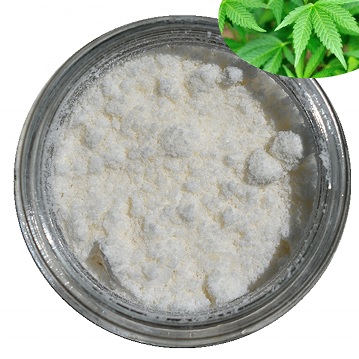| Uses | Magnesium acetate is used in the manufacture of rayon fiber for cigarette filters; and as a fixative for dyes in textile printing. It also is used as an antiseptic and disinfectant.
|
| Preparation | Magnesium acetate is prepared by treating magnesium oxide with acetic acid. Magnesium oxide reacts with concentrated acetic acid in boiling ethyl acetate to produce the alpha form of anhydrous magnesium acetate. The beta form is obtained by treating the oxide with 5–6% acetic acid. In slightly hydrated isobutyl alcohol medium the product is a monohydrate, Mg(OOCCH3)2•H2O. In aqueous solution magnesium acetate crystallizes as a tetrahydrate, the commercial product. The tetrahydrate dehydrates to anhydrous salt at 134°C.
|
| Description | Anhydrous Magnesium Acetate has the chemical formula Mg(CH3COO)2 and in its hydrous form, Magnesium Acetate Tetrahydrate, it has the chemical formula Mg(CH3COO)2.4H2O. In this compound the magnesium metal has an oxidation state of 2+.

Magnesium acetate is the magnesium salt of acetic acid.It is deliquescent and upon heating, it decomposes to form magnesium oxide.Magnesium acetate is commonly used as a source of magnesium or as a chemical reagent.
|
| Chemical Properties | white deliquescent crystals |
| Chemical Properties | Anhydrous magnesium acetate, a white, crystalline, deliquescent solid, occurs in two forms: α-Mg(C2H3O2)2, formed by the reaction of MgO and concentrated acetic acid (13–33%) in boiling ethyl acetate, an and β-Mg(C2H3O2)2 which is formed using 5–6% acetic acid. |
| Physical properties | Magnesium acetate appears as white hygroscopic crystals. It smells like acetic acid and is soluble in water. When it is in an aqueous solution its pH can be considered to be neutral. |
| Characteristics | In 1881 Charles Clamond invented the Clamond basket, one of the first effective gas mantles. The reagents used in this invention included magnesium acetate, magnesium hydroxide and water.
Magnesium acetate is commonly used as a source of magnesium or for the acetate ion in chemistry experiments. One example of this is when magnesium acetate and magnesium nitrate were both used to perform molecular dynamics simulations and surface tension measurements. In the experiment the authors found that the acetate had a stronger affinity for the surface compared to the nitrate ion and that the Mg2+ strongly repelled away from the air/liquid interference. They also found that the Mg2+ had a stronger tendency to bind with the acetate ion compared to the nitrate.
One of the more prevalent uses of magnesium acetate is in the mixture called calcium magnesium acetate (CMA). It is a mixture of calcium acetate and magnesium acetate. CMA is thought of as an environmentally friendly alternative deicer to NaCl and CaCl2. CMA also acts as a powerful SO2, NOx, and toxic particulate emission control agent in coal combustion processes to reduce acid rain, and as an effective catalyst for the facilitation of coal combustion. |
| Uses | Dye fixative in textile printing, deodorant, disinfectant, and antiseptic.
Magnesium acetate is used in chemistry and molecular biology as a reagent and a source of magnesium. Magnesium has a variety of biological roles in enzymology, cell membrane and wall structural integrity, muscle cell physiology, and nucleic acid structure.Magnesium is an essential co-factor in many enzymes, including deoxyribonuclease (DNase), the restriction enzymes EcoR I and EcoR V, and Ribonuclease H. Magnesium also stabilizes polymeric nucleic acids such as transfer RNA and ribozymes.
Magnesium acetate has been widely used in the crystallization of proteins. A protocol for the separation of MB and BB isoenzymes of creatine kinase and the LD1 isoenzyme of lactate dehydrogenase that involves elution with magnesium acetate has been published.
|
| Uses | The largest use for magnesium acetate is in the production of rayon fiber, which is used for cigarette filter tow. Magnesium acetate also has uses as a dye fixative in textile printing, as a deodorant, disinfectant, an antiseptic in medicine, and as a reagent chemical. |
| Uses | Magnesium acetate is used in molecular biology applications such as batch in vitro transcription of RNA and the crystallization of transcription factor:DNA complexes and proteins via the sitting-drop vapor-diffusion method. Also used as a buffer and to detect sodium and as a catalyst for sulfuric acid. |
| Definition | ChEBI: The magnesium salt of acetic acid. |
| Flammability and Explosibility | Nonflammable |
| Safety | Magnesium Acetate is a relatively safe compound to handle and has been given a health hazard rating of zero. However, it should always be handled with gloves and safety goggles. If it is gets in the eyes, the skin, ingested, or inhaled it will cause irritation in the respective areas: eyes, skin, gastrointestinal system, and lungs. |
| Synthesis | Synthesis of magnesium acetate from the reaction of magnesium hydroxide with acetic acid.
2CH3COOH + Mg(OH)2 → (CH3COO)2Mg + 2H2O
Magnesium carbonate suspended in distilled water with 20 % acetic acid solution.
2CH3COOH + MgCO3 → Mg(CH3COO)2
Reacting metallic magnesium with acetic acid dissolved in dry nitrogen benzene causes Magnesium Acetate to form along with the release a gas, presumably hydrogen.
Mg +2CH3COOH → Mg(CH3COO)2 + H2. |
| storage | Due to the fact that it is very hygroscopic, it must be stored away from water. It is also incompatible with strong oxidizers and should not be mixed with them. |
| Purification Methods | Crystallise it from anhydrous acetic acid, then dry it under vacuum for 24hours at 100o. [Nencollas J Chem Soc 744 1956, Beilstein 2 IV 113.] |



